1999-2008
Thomas Hoepker
Photography 1955 - 2008
14 June to 14 September 2008
There are photographic images from Thomas Hoepker that have been implanted in our visual memory: the famine in India (1951), lepers in Ethiopia (1963), the boxing idol Muhammad Ali (1966), the recruiting of U.S. marines (1970) and New York on 11 September 2001. These photographs were not intended merely to illustrate text but were part of exciting multi-page picture series that sourced their vitality solely from the visual expressiveness of photography.
What we notice in Hoepker's images today more than all else is the 'human glance'. He is no photographic journalist seeking the sensational report but an inquisitive, highly sensitive observer. Hoepker's pictures are seen in the category of 'human interest photography' along with names such as Dorothea Lange, Robert Frank, Henri Cartier-Bresson and Robert Capa, the photographic style of which has been decidedly influenced by the legendary MAGNUM photographic agency, of which Hoepker has been a member since 1989.
Thomas Hoepker's retrospective documents not only the curiosity and intensity with which he confronts the human dramas he witnesses throughout the world, but also how he has always searched for the most suitable form of expression in his array of photographic tasks.
The exhibition was prepared together with Thomas Hoepker and in cooperation with MAGNUM Photos Paris and the photographic museum in the Stadtmuseum, Munich.
Deix in the City
8 March to 8 June 2008
Audacious taboo-breaking, caustic derision, irrepressible carnal desire and Baroque sensual delight are the hallmarks of the Austrian satirist Manfred Deix. His characters caricature 'healthy popular sentiment' as being obese, blown up and downright mean. Politicians, policemen, the clergy, pederasts, perverts, prostitutes, tourists, foreigners, the unemployed and neo-nazis are all to be found in his bursting cosmos of images.
When the exhibition illustrations are looked at his people depicted on paper are seen at first to be monstrous incarnations of his fantasy until it is surprisingly seen later on that people on the street really do look like Deix's figures. "The satire of our reality today," says Deix, "beats the power of imagination of a caricaturist hands down." He therefore does not see himself as being one who 'exaggerates' but one who 'touches up' or 'belittles' the daily satire of everyday life, and a graphic artist who aims to 'playfully spread a touch of beauteousness among the people'.
200 original Deix drawings are put on display by the Ludwig Galerie, including his new Arnold Schwarzenegger biography 'The Naked Truth'.
The exhibition was created in cooperation with the Caricature Museum in Krems and the Wilhelm Busch Museum in Hanover.
Herzenspein und Nasenschmerz / Heart Pain and Nose Ache
Wilhelm Busch and the consequences
13 October 2007 to 24 February 2008
Wilhelm Busch, thanks to his legendary comic series Max and Moritz, the pious Helene, Plisch and Plum, Hans Huckebein, Fips the monkey and others, was the man who really taught pictures how to run. The thing that fascinates us with Winsor McCay's 'Little Nemo' comics and the early 'Silly Sinphonies' films from Disney, the world of moving images, was in effect invented by Wilhelm Busch. He attempted to distance himself from the attitude of artists before him trying to express themselves within one frame, and told his pictorial narrative in a series of images with a compelling sense of drama that drew viewers into the activity: focal points and perspectives change constantly, part complete views and part close-up, an obsession with detail and the sheer violence of his dynamic line design.
His painterly work was also modern. Franz Marc described Wilhelm Busch as the very first 'Futurist', as with his furious brushwork he extracted all sense of inner stability from his paintings, transforming them into a conglomerate of colour imbued with motion.
His images do not idealise, but caricature, deform, distort and spoof ideal forms, subjecting what is good to ridicule. 'Heart Pain and Nose Ache' documents the dependence of caricature upon malice, spitefulness and malicious joy.
As well as masterpieces from Wilhelm Busch, works are also on display from Callot, Carracci, Gillray, Rowlandson, Hogarth, Grandville, Toepffer, Dirks, McCay, Disney, Heine, Flora, Pericoli, Searle, Sempé, Topor, Ungerer and others.
Exhibition cooperation partners: the Wilhelm Busch Museum, Hanover
Living Stones
Mother Nature as an Artist
10 February to 20 May 2007
The exhibition unfolds to the visitor the fascinating diversity in the relationship between nature and art. Stones from two billion years ago and the photographic work of Albert Renger-Patzsch, Alfred Ehrhardt und Karl Blossfeldt demonstrate that nature and art are both imbued to the same degree with the powers of creative form.
'Living Stones' commences with a cultural and historical prologue: a medieval rock crystal crucifix and crystal quartz, ancient Chinese scholars' rocks and bizarrely shaped stones. The fusioning of eminent works of art with precious stones from the Ludwig Collection renders perceivable the differences between the European and Far Eastern philosophies of nature.
The late work from Albert Renger-Patzsch titled 'Gestein' (Stone) with 64 photographs shows the never-ending circle of creation and decay that has been occurring for billions of years – the phases of growth in the rocks of the Earth. The photography of Renger-Patzsch, Blossfeldt and Ehrhardt form an exciting contrast to the unique stone findings and crystals. The exhibition presents the stones exquisitely as creative forms of Mother Nature and as also forms of art. When viewers begins to enter into the consciousness of the stones with all their beauty they commence to tell their story: each one has its own biography, for example the large iron nickel meteorite that plunged to Earth over 30,000 years ago and that originates from the asteroid belt between Mars and Jupiter and originated 4.5 billion years ago together with the solar system.
The exhibition originated in cooperation with the Ruhr Museum in Essen, the Ann and Jürgen Wilde Collection, Zülpich, and the Alfred Ehrhardt Foundation, Cologne. Donors of the works of cultural heritage are the Museum for East Asian Art, Cologne, Museum Schnütgen, Cologne and the Suermondt Ludwig Museum, Aachen.
Henri Cartier-Bresson
Photography and Drawings
27 May 2006 to 27 August 2006
The exhibition displays 150 photographic masterpieces collected by Henri Cartier-Bresson (1908 – 2004) in his last years in the form of a 'small-scale retrospective'. We come face to face with many of the familiar images from France, Mexico, Spain, North America, Russia, India and China that make us conscious of just how strongly this photographer defined the image of man in the 20th century.
The unique essence of this exhibition is that photographs are shown for the first time in the Ludwig Galerie on an equal footing with his portrait, nude and landscape drawings; in the last three decades of his life Henri Cartier-Bresson only photographed occasionally, applying most of his creative strength to pencil and paper. He himself merely saw a change of the craft, as the activity of drawing for him was seen to be on the same level as photography, demanding maximum awareness and concentration in order to capture the exciting vibrancy of life.
Films have been integrated into the exhibition in which Henri Cartier-Bresson talks about his abstruse desire to 'penetrate the living hearts of people with his camera and drawing utensils and to capture this decisive moment of contact'. In addition many of the legendary original magazines can be seen (LIFE, Paris Match, stern and DU) that first published Cartier-Bresson's photo series since 1937.
The exhibition was realised in cooperation with MAGNUM Photos Paris.
Deutsche Bilder aus der Sammlung Ludwig / German Paintings from the Ludwig Collection
11 February to 14 May 2006
Peter and Irene Ludwig collected high quality works in the 1970s in equal measure from important artists hailing from both West and East Germany: Altenbourg, Baselitz, Beuys, Ebersbach, Fetting, Grützke, Heisig, Immendorff, Kiefer, Klapheck, Lüpertz, Mattheuer, Metzkes, Penck, Polke, Richter, Schultze, Sitte, Stelzmann, Stötzer, Tübke, Vostell and others.
'German Paintings' shows for the first time works from the collection at eye level: a German-to-German contention and amalgamation of images. The exhibition attempts to give a concrete form to the often quite grim painterly debate of recent years with the coming together of the paintings. It happens to be a specific peculiarity of art that its richness and fascination is only experienced by observation of original works. For us to perceive their differences and also indeed their familiarities demands a need for such images to come together more often than has been the case in recent times.
The exhibition draws on works of Medieval art from the Ludwig Collection as well as Expressionism and New Objectivity from other collections in order to excite the perception of the multifaceted historical roots of German-German art to an order in excess of that until now.
The objects of art from the Ludwig Collection are on loan from: Museum Ludwig Cologne, Ludwig Forum for International Art Aachen, Suermondt Ludwig Museum Aachen, Museum of Modern Art Foundation Ludwig Vienna, Ludwig Museum Budapest, Museum Ludwig in the Russian State Museum St. Petersburg, Germanic National Museum Nuremberg, Museum Ludwig Coblenz and others.
Gottfried Helnwein
Beautiful Children
19 June to 3 October 2005
He is deemed to be the master of shock: the Austrian painter Gottfried Helnwein shatters taboos to confront viewers with his hyper realistically painted visions. The central theme of the one hundred mostly large format works of Helnwein is the child. Not as being innocent and lovable but as an object of injury, disrobement, humiliation and abuse. The ability of mankind to suffer, the most shocking motif in the history of art, leads us into the heady images of Helnwein and the destiny of a child void of pity. The harrowing factor of his method of representation is that he destroys those clichés of a happy childhood so dear to us, casting observers into the role of confidants, witnesses and accomplices of a glaringly blatant injustice.
The viewer can hardly cast his eyes away from the mesmerising quality of the Helnwein images, as within them meticulous attention to photographic detail fuses with the inner illumination reminiscent of Old Master paintings to create an almost magical surface effect. This inner source of light permeates the figures and objects, appearing to lift them up and transcend them in a way that reminds us of devotional images. Although what we then see in the works are not Holy scenes but rather apocalyptic nightmares.
Few artists have explored the area of conflict to be found between painting and photography as deeply as Helnwein. At first glance it is not yet clear as to whether his works are paintings or photography. What appears at first to be photographed reality is seen to be painted upon close inspection. His pictures of children, but also of the catastrophes of history and modern times appear to us irritatingly ambiguous, as do his portraits of personalities such as Arno Breker, Andy Warhol, Che Guevara and Marilyn Manson: that which is and that which seems to be, masks and faces, image and reality merge, blur and are cast down into the depths of disfigurement.
The exhibition was created in cooperation with the Wilhelm Busch Museum, Hanover.
Die Wunder der Natur / The Wonder of Nature
Romanesque Capitals, Old Plant Books and the Photography of Blossfeldt
5 March to 4 June 2005
The exhibition puts on display works sourced from three unique collections of art: photography from Karl Blossfeldt from the collection of Ann and Jürgen Wilde located at Zülpich, decorative Romanesque capitals from the Schnütgen Museum in Cologne and antiquarian books on flora from the Bamberg State Library. The material created by artists, craftsmen and scientists over a period of almost 1,000 years is highly diverse, but all sings a song of praise dedicated to the creative forces of nature.
Karl Blossfeldt photographed the world of plants in enlargements of 2 to 40 times in order to make apparent an evolvement of art history from the forms of nature. As Walter Benjamin wrote, the power of association in relation to art history that almost forces itself upon us when we observe the photographic work is manifested in the prologue of the exhibition: the photo of the fiddlehead fern and a golden crozier, a leaf of the saxifrage and a Gothic rose window, an acanthus plant and medieval tapestry.
The exhibition allows for the first time Blossfeldt's photographic work to be seen in conjunction with Romanesque capitals from the 10th to 13th centuries. It combines over a span of 1,000 years the reverence and curiosity felt by artists and scientists in the face of the creative forces of nature.
In the old plant and herb books each plant is exactly specified in text and illustration and their use as a source of nutrition, medicine or poison is described. At the same time the pictures also attempt to respectfully display the plant as a unique creation. For these artists and scientists it was a question of knowledge and edification to an equal degree.
The unique forms of art that until now were for us the sole expression of the creative powers of man are concealed within the most unobtrusive and inconspicuous of plants. Man and nature enter into unison as creative beings in a miraculous way.
Welt der Gefäße / The World of Vessels
From the Antique to Picasso
9 October 2004 to 30 January 2005
The exhibition presents 130 masterpieces of applied art from 5,000 years taken from the collections of Peter and Irene Ludwig as well as other major museums and private collections: an ancient Egyptian child's urn, a Greek bulbous amphora, an Iranian donor vessel, a pre-Columbian figurative vessel, an ancient Chinese standing amphora, a Korean calabash and a Medieval chalice. The fascination created by the exhibition's masterpieces of handicraft enable the comprehension that these vessels were once perceived as secretive, life-giving and life-destroying forces with anthropomorphic, zoomorphic and geomorphic forms imbued with the energy of nature and man. A pantheistic view of the world infuses the 'World of Vessels' that became lost in the modern age, as did the central role the vessels assumed in matriarchal culture and art.
The vessel as an object has since that time undergone an array of diverse metamorphoses. Unique porcelain and faiences from Meissen, Delft and Strasbourg show how in the gloss and glamour of the Baroque and Rococo eras the vessel as a universal symbol of creation was transformed into gallant yet delicate decoration for the table, possessing the highest levels of artistic ability.
Ceramic masterpieces from Pablo Picasso have been put on view at the end of the exhibition. After all it was thanks to Picasso that following the reform movement of Art Nouveau a significant contribution to ceramics was made, gaining new impulses after lying fallow as applied art in the 19th century.
Günter Grass
Graphics and Sculpture
1 May to 4 July 2004
The exhibition, featuring 220 drawings, manuscript pages, printed cycles, watercolours and sculptures, shows the tensely exciting relationship existing between drawing and writing. Together with works from the private collection of Günter Grass and until now shown partly for the first time, the exhibition enables a highly diverse insight into his creative activity developed over the course of five decades.
Writing, drawing and sculptural activity during the creative processes of Günter Grass are on an equal footing, representing interfusing and productive forms of expression stemming from his artistic personality. Long before Günter Grass laid his parable 'The Flounder' to paper the fish was drawn with brush, charcoal and pencil; the graphic designs for the 'Diary of a Snail' on the other hand were created following the completion of the manuscript. And the first 20 pages of 'The Rat' were not written on paper but on damp clay tiles.
The activity of drawing helps Günter Grass to grasp overseen, forgotten or suppressed things that he would otherwise aim to describe with text in a sensual, physical way. A metaphor dictates that only when something is transformed into the form of a graphical sheet does it have constancy. His desire to draw objectively gives the things to which he relates to in his images and texts their overwhelming sense of clarity, serving to bring us into close proximity with life itself and enables us to smell, taste and touch its grotesque fantasy, smells, excretions, hysteria, mirth and violence. The energy of life aroused in his images flows through man, animals and plants to the same extent, coming together in an excessively Baroque, grotesque bestiary.
Cooperation partners: The Günter Grass Archive Lübeck and the Ludwig Forum for International Art, Aachen.
Park-Stadt Oberhausen / Oberhausen as a City of Parks
The Renaissance of a Historical City Centre of Modern Architecture Photography by Thomas Wolf
7. 2. to 18. 4. 2004
The exhibition shows Oberhausen in a way thoroughly unexpected from an industrial city: administration buildings and dwellings exist in a sea of trees, as in a park. Precious tree-lined alleys pervade the city like a network of green arteries. That which was created in the centre of Oberhausen from 1900 to the end of the 1930s was the realisation of a major municipal utopia for modern architecture: the centre of the city itself was transformed to a park.
At the time the municipal architect Ludwig Freitag was not only able to animate the best architects from the schools of Berlin and Darmstadt to create masterpieces of expressionist brickwork architecture, but also to allow these buildings to fuse with the city's parks and tree-lined alleys to become a unity of fascinating and rhythmical dynamism.
The recreation of the historic park city of Oberhausen with its look into the past also at the same time casts its gaze far into the future: the park city was developed with the aim of creating a 'healthy urban corpus with a network of radiating alleys and green areas as powerful arteries and lungs'.
Gerhard Haderer
Unser täglich Wahnsinn / Our Daily Insanity
24 May to 7 September 2003
For over ten years now Gerhard Haderer has been creating his fascinating caricatures on a weekly basis for the magazines 'Stern' and 'Profil', although Haderer does not see himself as a cartoonist but as a realist. With his almost embarrassingly precise method of observation he shows us how we really appear, or put another way what our keen striving to achieve modernity, fitness and dynamism does to our faces and bodies, our spirit and also to our environment.
And everything start off so wonderfully well: the glossy surfaces brimming with preciously painted details entice us to analysis his pictures more closely, although Haderer forbids us to make ourselves comfortable. Voyeurism quickly turns to the shudders, as what he has painted with lovingly attentive care is upon closer looks the hectic, everyday insanity of our existen¬ce: obsession with beauty and fitness, holiday stress, family get-togethers, the craving for food, TV addiction, the dependence upon mobile phones and technology, the intoxicating thrill of speed, the lasciviousness of scandal, the craving for destruction, megalomania and egomania. Haderer's drawings show us not as lamentable victims but as fanatical participants that invest their complete ¬energy of life in this daily madness. The images show that the vision of Neil Postman, 'we amuse ourselves to death' is no longer a prophesy but indeed grim reality.
The exhibition shows 140 original drawings and cartoons, including the image series 'The Life of Jesus' that in recent years caused a scandal in Austria by flouting with religious sensitivities.
Cooperation partner: Wilhelm Busch Museum, Hanover
Stories and Supermodels
Photographs from Peter Lindbergh
14 February to 11 May 2003
Nadja Auermann, Milla Jovovich, Naomi Campbell, Linda Evangelista, Tatjana Patitz, Kristen McMenamy, Amber Valletta and Marie-Sophie Wilson are just some of the supermodels and stars that the photography of Peter Lindbergh has transformed into icons of the modern era. Yearningly adored and grimly cursed in the past as goddesses, amazons, witches and fairies, and now reborn through Peter Lindbergh's photographic power of imagery in the form of supermodels. The enigmatic, sphinx-like quality of his women is at the same time their inner contradiction: strong women, but women that are also vulnerable, brittle, fragile. Wim Wenders in the latest Lindbergh book 'Stories' relates that the exhibition title denotes the women as being strong but without protection, full of devotion to the cause but untouchable, both familiar and distanced at the same time. With the expressionist methods of fashion photography Peter Lindbergh sets his Stories in scene at the most unusual of the world's locations. He casts his models against the towering industrial facades of Duisburg steelworks, the rugged cliffs at Zabriskie Point, within the urban canyons of Manhattan and on the deserted beaches of California. These are singular landscapes that with the artificiality of the creative entities coming to life from within them become the venues for modern myths, appearing at the same time real and a part of fiction. The 'Invasion' story forms the central part of the exhibition, a fantastically modern apocalypse documenting the arrival of beings from outer space to the planet Earth.
STORIES is the most comprehensive show of Peter Lindbergh's work until the present time. The 204 mostly large-format photographs are shown in this exhibition for the first time together with expressive documentary films such as the film about Pina Bausch, and his commercial advertising spots.
China – Tradition and Modernity
12 October 2002 to 2 February 2003
The exhibition shows for the first time masterpieces of both ancient and contemporary Chinese art. It delineates the cultural area of conflict in which Chinese culture is set today: in the grips of an awe-inspiring and ancient art evolved from the forces of tradition and a cultural upheaval driven on by the hustle and bustle of economical progress, putting to question the complete array of the traditional concepts of value and beauty.
Unique works such as the nine-part chimes from the Zhou period (8th century B.C.) and the group of ceramic camels from the Tang Dynasty (8th century A.D.) show that ancient Chinese art was characterised by both the highest spiritual withdrawal as well as exciting elements of expression. The coming together of these works of art in an exhibition drawn from various millennia may well contribute to Europeans better comprehending the daunting contradictions between tradition and modernity existing in China today.
The exhibition was created in cooperation with the Museum for East Asian Art Cologne, the Museum Ludwig Cologne, the Ludwig Forum for International Art Aachen and the China National Museum of Fine Arts Peking.
Made in USA
Keith Haring, Robert Longo, Kenny Scharf, Bill Beckley
19 January to 14 April 2002
No artistic movement has so fascinatingly expressed the American spirit of the times as much as Pop Art. Since the seventies American artists of various generations such as Warhol, Lichtenstein, Haring, Longo, Scharf and Beckley have uplifted the triviality of the American Way to become the heroes of their images, integrating the graphic language of popular magazines, advertising, photography and graffiti into their methods of expression.
The works of Keith Haring, Robert Longo, Kenny Scharf and Bill Beckley also show us the American culture of fun, in which all is happy, funny or pretty, but is still part of a society that 'amuses itself to death', as once prophesied by Neil Postman. Whether it is the expressive language of graffiti contained within the paintings of Haring and Scharf or the analytical photography of Longo and Beckley, we experience their uplifting and at the same time shuddering fascination: the goings-on of the fun generation conceal hysteria, alienation, violence and the fear of death. This ambivalence between the desire for pleasure and the fear of death has existed in the works of Pop Art since the time of Andy Warhol. Much of that communicated by the images of Keith Haring, Robert Longo, Kenny Scharf and Bill Beckley since the 80's and 90's indeed first becomes cognisant following the 11th of September.
The exhibition is organised in cooperation with the Kunstverein Oberhausen and Galerie Mayer, Dusseldorf.
Götter, Helden und Idole / Gods, Heroes and Idols
25 January to 13 April 1998
We come across images of gods both old and new and from different cultures in the masterpieces of painting, sculpture, applied art, poster art and photography: the Egyptian queen Nefertiti, Olympic athletes, the 'enlightened' Buddha, the Holy Virgin, Aphrodite, the Indian goddess Sita, the Medieval knights and the awe-inspiring Fudó, the highly gifted actress Sarah Bernardt, the godly Garbo, the rock idol Elvis Presley and the superstar Michael Jackson.
All gods, heroes, idols, holy people, witches and demons are the immortal paragons that are resurrected in the pantheon of our modern Trivial culture. The everyday imagery of films, photography, comics and television and the power of their systematic distribution via electronic pictorial communication is responsible for their continued fascination in the everyday lives of people: the arousing of passions, keeping demons at safe distance, fulfilling holy expectations, maintaining balances, separating good from evil in a world where Heaven is devoid of gods and where we must get used to seeing activity and experiences in cyber-space as being more real than those of our senseless everyday lives.
The exhibition was created in cooperation with the Basel Museum of Antiquities, the Ludwig Collection, the Ludwig Forum for International Art Aachen, the Museum Ludwig Cologne, the Rautenstrauch Joest Museum Cologne, the Suermondt Ludwig Museum Aachen and others.
Thomas Hoepker Photography 1955 - 2008
Thomas Hoepker
Photography 1955 - 2008
14 June to 14 September 2008
There are photographic images from Thomas Hoepker that have been implanted in our visual memory: the famine in India (1951), lepers in Ethiopia (1963), the boxing idol Muhammad Ali (1966), the recruiting of U.S. marines (1970) and New York on 11 September 2001. These photographs were not intended merely to illustrate text but were part of exciting multi-page picture series that sourced their vitality solely from the visual expressiveness of photography.
What we notice in Hoepker's images today more than all else is the 'human glance'. He is no photographic journalist seeking the sensational report but an inquisitive, highly sensitive observer. Hoepker's pictures are seen in the category of 'human interest photography' along with names such as Dorothea Lange, Robert Frank, Henri Cartier-Bresson and Robert Capa, the photographic style of which has been decidedly influenced by the legendary MAGNUM photographic agency, of which Hoepker has been a member since 1989.
Thomas Hoepker's retrospective documents not only the curiosity and intensity with which he confronts the human dramas he witnesses throughout the world, but also how he has always searched for the most suitable form of expression in his array of photographic tasks.
The exhibition was prepared together with Thomas Hoepker and in cooperation with MAGNUM Photos Paris and the photographic museum in the Stadtmuseum, Munich.

Deix in the City
8 March to 8 June 2008
Audacious taboo-breaking, caustic derision, irrepressible carnal desire and Baroque sensual delight are the hallmarks of the Austrian satirist Manfred Deix. His characters caricature 'healthy popular sentiment' as being obese, blown up and downright mean. Politicians, policemen, the clergy, pederasts, perverts, prostitutes, tourists, foreigners, the unemployed and neo-nazis are all to be found in his bursting cosmos of images.
When the exhibition illustrations are looked at his people depicted on paper are seen at first to be monstrous incarnations of his fantasy until it is surprisingly seen later on that people on the street really do look like Deix's figures. "The satire of our reality today," says Deix, "beats the power of imagination of a caricaturist hands down." He therefore does not see himself as being one who 'exaggerates' but one who 'touches up' or 'belittles' the daily satire of everyday life, and a graphic artist who aims to 'playfully spread a touch of beauteousness among the people'.
200 original Deix drawings are put on display by the Ludwig Galerie, including his new Arnold Schwarzenegger biography 'The Naked Truth'.
The exhibition was created in cooperation with the Caricature Museum in Krems and the Wilhelm Busch Museum in Hanover.
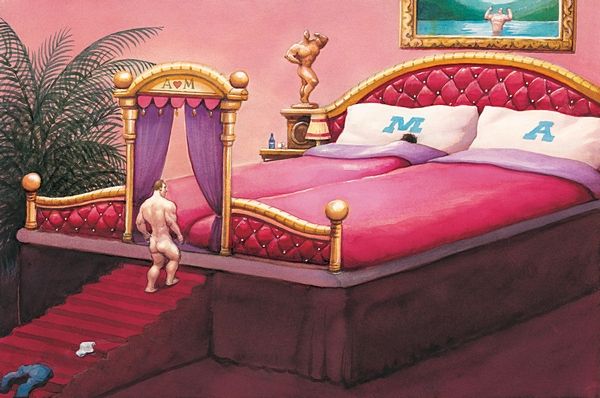
Heart Pain and Nose Ache - Wilhelm Busch and the consequences
Herzenspein und Nasenschmerz / Heart Pain and Nose Ache
Wilhelm Busch and the consequences
13 October 2007 to 24 February 2008
Wilhelm Busch, thanks to his legendary comic series Max and Moritz, the pious Helene, Plisch and Plum, Hans Huckebein, Fips the monkey and others, was the man who really taught pictures how to run. The thing that fascinates us with Winsor McCay's 'Little Nemo' comics and the early 'Silly Sinphonies' films from Disney, the world of moving images, was in effect invented by Wilhelm Busch. He attempted to distance himself from the attitude of artists before him trying to express themselves within one frame, and told his pictorial narrative in a series of images with a compelling sense of drama that drew viewers into the activity: focal points and perspectives change constantly, part complete views and part close-up, an obsession with detail and the sheer violence of his dynamic line design.
His painterly work was also modern. Franz Marc described Wilhelm Busch as the very first 'Futurist', as with his furious brushwork he extracted all sense of inner stability from his paintings, transforming them into a conglomerate of colour imbued with motion.
His images do not idealise, but caricature, deform, distort and spoof ideal forms, subjecting what is good to ridicule. 'Heart Pain and Nose Ache' documents the dependence of caricature upon malice, spitefulness and malicious joy.
As well as masterpieces from Wilhelm Busch, works are also on display from Callot, Carracci, Gillray, Rowlandson, Hogarth, Grandville, Toepffer, Dirks, McCay, Disney, Heine, Flora, Pericoli, Searle, Sempé, Topor, Ungerer and others.
Exhibition cooperation partners: the Wilhelm Busch Museum, Hanover
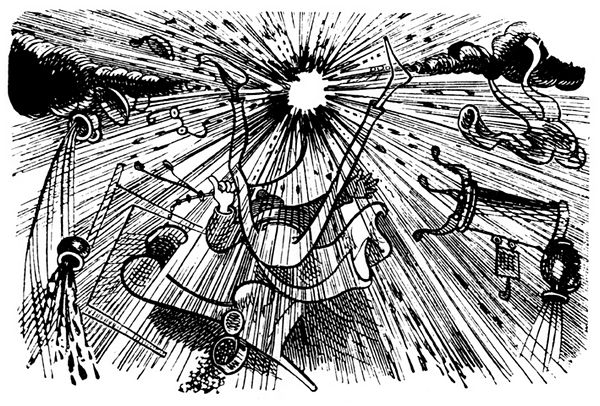
Living Stones - Mother Nature as an Artist
Living Stones
Mother Nature as an Artist
10 February to 20 May 2007
The exhibition unfolds to the visitor the fascinating diversity in the relationship between nature and art. Stones from two billion years ago and the photographic work of Albert Renger-Patzsch, Alfred Ehrhardt und Karl Blossfeldt demonstrate that nature and art are both imbued to the same degree with the powers of creative form.
'Living Stones' commences with a cultural and historical prologue: a medieval rock crystal crucifix and crystal quartz, ancient Chinese scholars' rocks and bizarrely shaped stones. The fusioning of eminent works of art with precious stones from the Ludwig Collection renders perceivable the differences between the European and Far Eastern philosophies of nature.
The late work from Albert Renger-Patzsch titled 'Gestein' (Stone) with 64 photographs shows the never-ending circle of creation and decay that has been occurring for billions of years – the phases of growth in the rocks of the Earth. The photography of Renger-Patzsch, Blossfeldt and Ehrhardt form an exciting contrast to the unique stone findings and crystals. The exhibition presents the stones exquisitely as creative forms of Mother Nature and as also forms of art. When viewers begins to enter into the consciousness of the stones with all their beauty they commence to tell their story: each one has its own biography, for example the large iron nickel meteorite that plunged to Earth over 30,000 years ago and that originates from the asteroid belt between Mars and Jupiter and originated 4.5 billion years ago together with the solar system.
The exhibition originated in cooperation with the Ruhr Museum in Essen, the Ann and Jürgen Wilde Collection, Zülpich, and the Alfred Ehrhardt Foundation, Cologne. Donors of the works of cultural heritage are the Museum for East Asian Art, Cologne, Museum Schnütgen, Cologne and the Suermondt Ludwig Museum, Aachen.
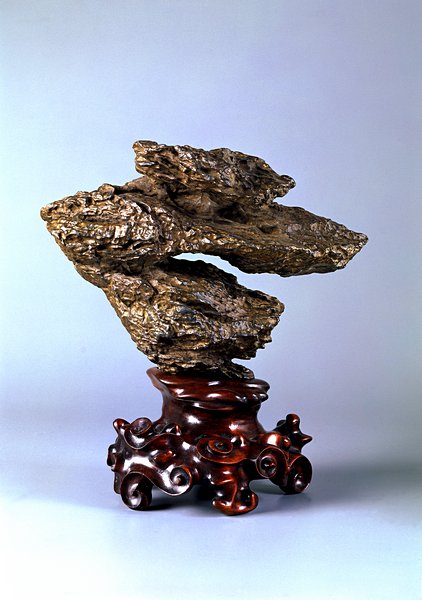
Henri Cartier-Bresson - Photography and Drawings
Henri Cartier-Bresson
Photography and Drawings
27 May 2006 to 27 August 2006
The exhibition displays 150 photographic masterpieces collected by Henri Cartier-Bresson (1908 – 2004) in his last years in the form of a 'small-scale retrospective'. We come face to face with many of the familiar images from France, Mexico, Spain, North America, Russia, India and China that make us conscious of just how strongly this photographer defined the image of man in the 20th century.
The unique essence of this exhibition is that photographs are shown for the first time in the Ludwig Galerie on an equal footing with his portrait, nude and landscape drawings; in the last three decades of his life Henri Cartier-Bresson only photographed occasionally, applying most of his creative strength to pencil and paper. He himself merely saw a change of the craft, as the activity of drawing for him was seen to be on the same level as photography, demanding maximum awareness and concentration in order to capture the exciting vibrancy of life.
Films have been integrated into the exhibition in which Henri Cartier-Bresson talks about his abstruse desire to 'penetrate the living hearts of people with his camera and drawing utensils and to capture this decisive moment of contact'. In addition many of the legendary original magazines can be seen (LIFE, Paris Match, stern and DU) that first published Cartier-Bresson's photo series since 1937.
The exhibition was realised in cooperation with MAGNUM Photos Paris.
German Paintings from the Ludwig Collection
Deutsche Bilder aus der Sammlung Ludwig / German Paintings from the Ludwig Collection
11 February to 14 May 2006
Peter and Irene Ludwig collected high quality works in the 1970s in equal measure from important artists hailing from both West and East Germany: Altenbourg, Baselitz, Beuys, Ebersbach, Fetting, Grützke, Heisig, Immendorff, Kiefer, Klapheck, Lüpertz, Mattheuer, Metzkes, Penck, Polke, Richter, Schultze, Sitte, Stelzmann, Stötzer, Tübke, Vostell and others.
'German Paintings' shows for the first time works from the collection at eye level: a German-to-German contention and amalgamation of images. The exhibition attempts to give a concrete form to the often quite grim painterly debate of recent years with the coming together of the paintings. It happens to be a specific peculiarity of art that its richness and fascination is only experienced by observation of original works. For us to perceive their differences and also indeed their familiarities demands a need for such images to come together more often than has been the case in recent times.
The exhibition draws on works of Medieval art from the Ludwig Collection as well as Expressionism and New Objectivity from other collections in order to excite the perception of the multifaceted historical roots of German-German art to an order in excess of that until now.
The objects of art from the Ludwig Collection are on loan from: Museum Ludwig Cologne, Ludwig Forum for International Art Aachen, Suermondt Ludwig Museum Aachen, Museum of Modern Art Foundation Ludwig Vienna, Ludwig Museum Budapest, Museum Ludwig in the Russian State Museum St. Petersburg, Germanic National Museum Nuremberg, Museum Ludwig Coblenz and others.
Gottfried Helnwein - Beautiful Children
Gottfried Helnwein
Beautiful Children
19 June to 3 October 2005
He is deemed to be the master of shock: the Austrian painter Gottfried Helnwein shatters taboos to confront viewers with his hyper realistically painted visions. The central theme of the one hundred mostly large format works of Helnwein is the child. Not as being innocent and lovable but as an object of injury, disrobement, humiliation and abuse. The ability of mankind to suffer, the most shocking motif in the history of art, leads us into the heady images of Helnwein and the destiny of a child void of pity. The harrowing factor of his method of representation is that he destroys those clichés of a happy childhood so dear to us, casting observers into the role of confidants, witnesses and accomplices of a glaringly blatant injustice.
The viewer can hardly cast his eyes away from the mesmerising quality of the Helnwein images, as within them meticulous attention to photographic detail fuses with the inner illumination reminiscent of Old Master paintings to create an almost magical surface effect. This inner source of light permeates the figures and objects, appearing to lift them up and transcend them in a way that reminds us of devotional images. Although what we then see in the works are not Holy scenes but rather apocalyptic nightmares.
Few artists have explored the area of conflict to be found between painting and photography as deeply as Helnwein. At first glance it is not yet clear as to whether his works are paintings or photography. What appears at first to be photographed reality is seen to be painted upon close inspection. His pictures of children, but also of the catastrophes of history and modern times appear to us irritatingly ambiguous, as do his portraits of personalities such as Arno Breker, Andy Warhol, Che Guevara and Marilyn Manson: that which is and that which seems to be, masks and faces, image and reality merge, blur and are cast down into the depths of disfigurement.
The exhibition was created in cooperation with the Wilhelm Busch Museum, Hanover.
Die Wunder der Natur / The Wonder of Nature
Romanesque Capitals, Old Plant Books and the Photography of Blossfeldt
5 March to 4 June 2005
The exhibition puts on display works sourced from three unique collections of art: photography from Karl Blossfeldt from the collection of Ann and Jürgen Wilde located at Zülpich, decorative Romanesque capitals from the Schnütgen Museum in Cologne and antiquarian books on flora from the Bamberg State Library. The material created by artists, craftsmen and scientists over a period of almost 1,000 years is highly diverse, but all sings a song of praise dedicated to the creative forces of nature.
Karl Blossfeldt photographed the world of plants in enlargements of 2 to 40 times in order to make apparent an evolvement of art history from the forms of nature. As Walter Benjamin wrote, the power of association in relation to art history that almost forces itself upon us when we observe the photographic work is manifested in the prologue of the exhibition: the photo of the fiddlehead fern and a golden crozier, a leaf of the saxifrage and a Gothic rose window, an acanthus plant and medieval tapestry.
The exhibition allows for the first time Blossfeldt's photographic work to be seen in conjunction with Romanesque capitals from the 10th to 13th centuries. It combines over a span of 1,000 years the reverence and curiosity felt by artists and scientists in the face of the creative forces of nature.
In the old plant and herb books each plant is exactly specified in text and illustration and their use as a source of nutrition, medicine or poison is described. At the same time the pictures also attempt to respectfully display the plant as a unique creation. For these artists and scientists it was a question of knowledge and edification to an equal degree.
The unique forms of art that until now were for us the sole expression of the creative powers of man are concealed within the most unobtrusive and inconspicuous of plants. Man and nature enter into unison as creative beings in a miraculous way.
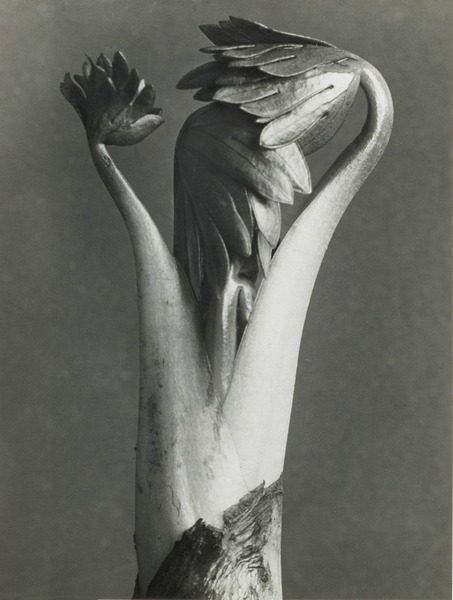
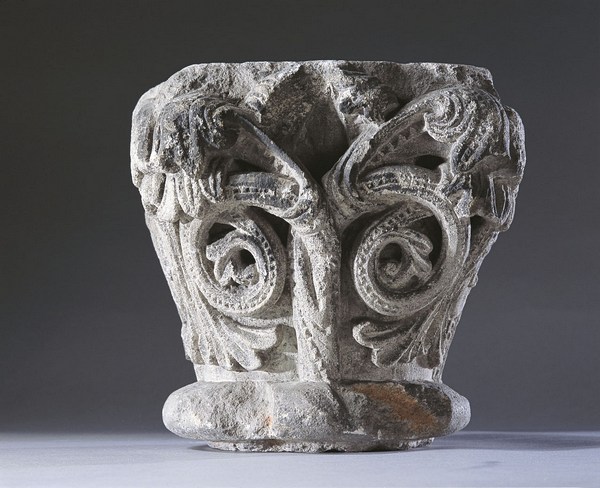
The World of Vessels - From the Antique to Picasso
Welt der Gefäße / The World of Vessels
From the Antique to Picasso
9 October 2004 to 30 January 2005
The exhibition presents 130 masterpieces of applied art from 5,000 years taken from the collections of Peter and Irene Ludwig as well as other major museums and private collections: an ancient Egyptian child's urn, a Greek bulbous amphora, an Iranian donor vessel, a pre-Columbian figurative vessel, an ancient Chinese standing amphora, a Korean calabash and a Medieval chalice. The fascination created by the exhibition's masterpieces of handicraft enable the comprehension that these vessels were once perceived as secretive, life-giving and life-destroying forces with anthropomorphic, zoomorphic and geomorphic forms imbued with the energy of nature and man. A pantheistic view of the world infuses the 'World of Vessels' that became lost in the modern age, as did the central role the vessels assumed in matriarchal culture and art.
The vessel as an object has since that time undergone an array of diverse metamorphoses. Unique porcelain and faiences from Meissen, Delft and Strasbourg show how in the gloss and glamour of the Baroque and Rococo eras the vessel as a universal symbol of creation was transformed into gallant yet delicate decoration for the table, possessing the highest levels of artistic ability.
Ceramic masterpieces from Pablo Picasso have been put on view at the end of the exhibition. After all it was thanks to Picasso that following the reform movement of Art Nouveau a significant contribution to ceramics was made, gaining new impulses after lying fallow as applied art in the 19th century.
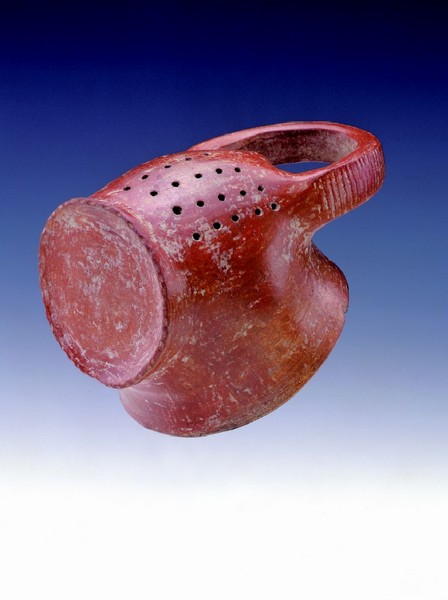
Günter Grass - Graphics and Sculpture
Günter Grass
Graphics and Sculpture
1 May to 4 July 2004
The exhibition, featuring 220 drawings, manuscript pages, printed cycles, watercolours and sculptures, shows the tensely exciting relationship existing between drawing and writing. Together with works from the private collection of Günter Grass and until now shown partly for the first time, the exhibition enables a highly diverse insight into his creative activity developed over the course of five decades.
Writing, drawing and sculptural activity during the creative processes of Günter Grass are on an equal footing, representing interfusing and productive forms of expression stemming from his artistic personality. Long before Günter Grass laid his parable 'The Flounder' to paper the fish was drawn with brush, charcoal and pencil; the graphic designs for the 'Diary of a Snail' on the other hand were created following the completion of the manuscript. And the first 20 pages of 'The Rat' were not written on paper but on damp clay tiles.
The activity of drawing helps Günter Grass to grasp overseen, forgotten or suppressed things that he would otherwise aim to describe with text in a sensual, physical way. A metaphor dictates that only when something is transformed into the form of a graphical sheet does it have constancy. His desire to draw objectively gives the things to which he relates to in his images and texts their overwhelming sense of clarity, serving to bring us into close proximity with life itself and enables us to smell, taste and touch its grotesque fantasy, smells, excretions, hysteria, mirth and violence. The energy of life aroused in his images flows through man, animals and plants to the same extent, coming together in an excessively Baroque, grotesque bestiary.
Cooperation partners: The Günter Grass Archive Lübeck and the Ludwig Forum for International Art, Aachen.
Park-Stadt Oberhausen / Oberhausen as a City of Parks
The Renaissance of a Historical City Centre of Modern Architecture Photography by Thomas Wolf
7. 2. to 18. 4. 2004
The exhibition shows Oberhausen in a way thoroughly unexpected from an industrial city: administration buildings and dwellings exist in a sea of trees, as in a park. Precious tree-lined alleys pervade the city like a network of green arteries. That which was created in the centre of Oberhausen from 1900 to the end of the 1930s was the realisation of a major municipal utopia for modern architecture: the centre of the city itself was transformed to a park.
At the time the municipal architect Ludwig Freitag was not only able to animate the best architects from the schools of Berlin and Darmstadt to create masterpieces of expressionist brickwork architecture, but also to allow these buildings to fuse with the city's parks and tree-lined alleys to become a unity of fascinating and rhythmical dynamism.
The recreation of the historic park city of Oberhausen with its look into the past also at the same time casts its gaze far into the future: the park city was developed with the aim of creating a 'healthy urban corpus with a network of radiating alleys and green areas as powerful arteries and lungs'.
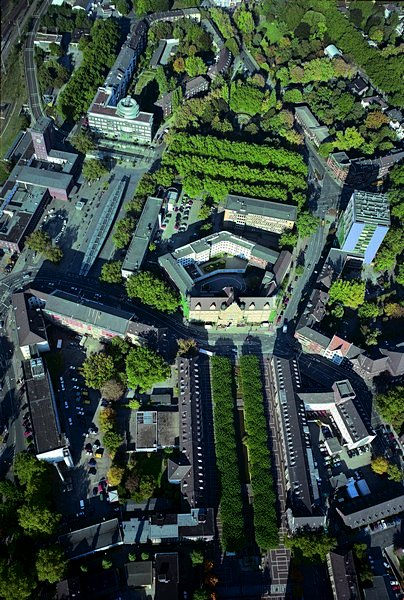
Gerhard Haderer - Our Daily Insanity
Gerhard Haderer
Unser täglich Wahnsinn / Our Daily Insanity
24 May to 7 September 2003
For over ten years now Gerhard Haderer has been creating his fascinating caricatures on a weekly basis for the magazines 'Stern' and 'Profil', although Haderer does not see himself as a cartoonist but as a realist. With his almost embarrassingly precise method of observation he shows us how we really appear, or put another way what our keen striving to achieve modernity, fitness and dynamism does to our faces and bodies, our spirit and also to our environment.
And everything start off so wonderfully well: the glossy surfaces brimming with preciously painted details entice us to analysis his pictures more closely, although Haderer forbids us to make ourselves comfortable. Voyeurism quickly turns to the shudders, as what he has painted with lovingly attentive care is upon closer looks the hectic, everyday insanity of our existen¬ce: obsession with beauty and fitness, holiday stress, family get-togethers, the craving for food, TV addiction, the dependence upon mobile phones and technology, the intoxicating thrill of speed, the lasciviousness of scandal, the craving for destruction, megalomania and egomania. Haderer's drawings show us not as lamentable victims but as fanatical participants that invest their complete ¬energy of life in this daily madness. The images show that the vision of Neil Postman, 'we amuse ourselves to death' is no longer a prophesy but indeed grim reality.
The exhibition shows 140 original drawings and cartoons, including the image series 'The Life of Jesus' that in recent years caused a scandal in Austria by flouting with religious sensitivities.
Cooperation partner: Wilhelm Busch Museum, Hanover
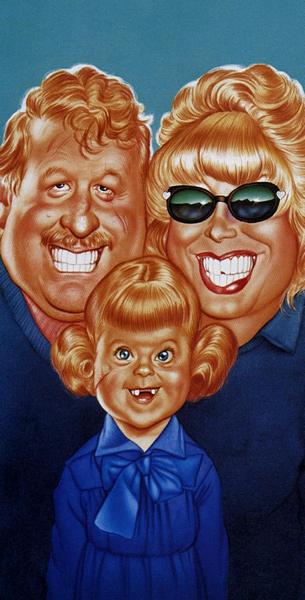
Stories and Supermodels - Photographs from Peter Lindbergh
Stories and Supermodels
Photographs from Peter Lindbergh
14 February to 11 May 2003
Nadja Auermann, Milla Jovovich, Naomi Campbell, Linda Evangelista, Tatjana Patitz, Kristen McMenamy, Amber Valletta and Marie-Sophie Wilson are just some of the supermodels and stars that the photography of Peter Lindbergh has transformed into icons of the modern era. Yearningly adored and grimly cursed in the past as goddesses, amazons, witches and fairies, and now reborn through Peter Lindbergh's photographic power of imagery in the form of supermodels. The enigmatic, sphinx-like quality of his women is at the same time their inner contradiction: strong women, but women that are also vulnerable, brittle, fragile. Wim Wenders in the latest Lindbergh book 'Stories' relates that the exhibition title denotes the women as being strong but without protection, full of devotion to the cause but untouchable, both familiar and distanced at the same time. With the expressionist methods of fashion photography Peter Lindbergh sets his Stories in scene at the most unusual of the world's locations. He casts his models against the towering industrial facades of Duisburg steelworks, the rugged cliffs at Zabriskie Point, within the urban canyons of Manhattan and on the deserted beaches of California. These are singular landscapes that with the artificiality of the creative entities coming to life from within them become the venues for modern myths, appearing at the same time real and a part of fiction. The 'Invasion' story forms the central part of the exhibition, a fantastically modern apocalypse documenting the arrival of beings from outer space to the planet Earth.
STORIES is the most comprehensive show of Peter Lindbergh's work until the present time. The 204 mostly large-format photographs are shown in this exhibition for the first time together with expressive documentary films such as the film about Pina Bausch, and his commercial advertising spots.
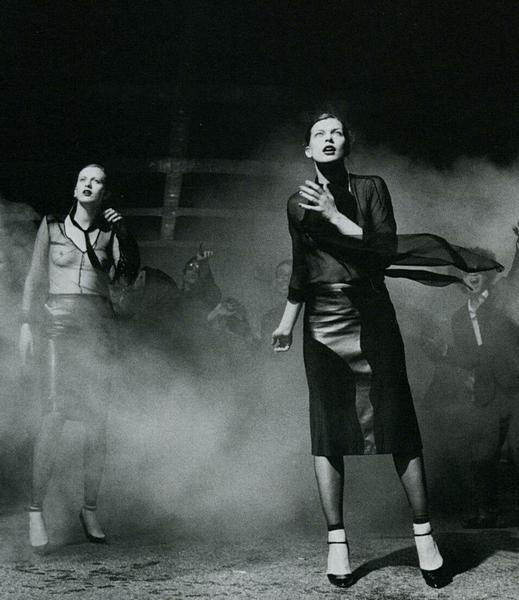
China – Tradition and Modernity
China – Tradition and Modernity
12 October 2002 to 2 February 2003
The exhibition shows for the first time masterpieces of both ancient and contemporary Chinese art. It delineates the cultural area of conflict in which Chinese culture is set today: in the grips of an awe-inspiring and ancient art evolved from the forces of tradition and a cultural upheaval driven on by the hustle and bustle of economical progress, putting to question the complete array of the traditional concepts of value and beauty.
Unique works such as the nine-part chimes from the Zhou period (8th century B.C.) and the group of ceramic camels from the Tang Dynasty (8th century A.D.) show that ancient Chinese art was characterised by both the highest spiritual withdrawal as well as exciting elements of expression. The coming together of these works of art in an exhibition drawn from various millennia may well contribute to Europeans better comprehending the daunting contradictions between tradition and modernity existing in China today.
The exhibition was created in cooperation with the Museum for East Asian Art Cologne, the Museum Ludwig Cologne, the Ludwig Forum for International Art Aachen and the China National Museum of Fine Arts Peking.

Made in USA - Keith Haring, Robert Longo, Kenny Scharf, Bill Beckley
Made in USA
Keith Haring, Robert Longo, Kenny Scharf, Bill Beckley
19 January to 14 April 2002
No artistic movement has so fascinatingly expressed the American spirit of the times as much as Pop Art. Since the seventies American artists of various generations such as Warhol, Lichtenstein, Haring, Longo, Scharf and Beckley have uplifted the triviality of the American Way to become the heroes of their images, integrating the graphic language of popular magazines, advertising, photography and graffiti into their methods of expression.
The works of Keith Haring, Robert Longo, Kenny Scharf and Bill Beckley also show us the American culture of fun, in which all is happy, funny or pretty, but is still part of a society that 'amuses itself to death', as once prophesied by Neil Postman. Whether it is the expressive language of graffiti contained within the paintings of Haring and Scharf or the analytical photography of Longo and Beckley, we experience their uplifting and at the same time shuddering fascination: the goings-on of the fun generation conceal hysteria, alienation, violence and the fear of death. This ambivalence between the desire for pleasure and the fear of death has existed in the works of Pop Art since the time of Andy Warhol. Much of that communicated by the images of Keith Haring, Robert Longo, Kenny Scharf and Bill Beckley since the 80's and 90's indeed first becomes cognisant following the 11th of September.
The exhibition is organised in cooperation with the Kunstverein Oberhausen and Galerie Mayer, Dusseldorf.
Götter, Helden und Idole / Gods, Heroes and Idols
25 January to 13 April 1998
We come across images of gods both old and new and from different cultures in the masterpieces of painting, sculpture, applied art, poster art and photography: the Egyptian queen Nefertiti, Olympic athletes, the 'enlightened' Buddha, the Holy Virgin, Aphrodite, the Indian goddess Sita, the Medieval knights and the awe-inspiring Fudó, the highly gifted actress Sarah Bernardt, the godly Garbo, the rock idol Elvis Presley and the superstar Michael Jackson.
All gods, heroes, idols, holy people, witches and demons are the immortal paragons that are resurrected in the pantheon of our modern Trivial culture. The everyday imagery of films, photography, comics and television and the power of their systematic distribution via electronic pictorial communication is responsible for their continued fascination in the everyday lives of people: the arousing of passions, keeping demons at safe distance, fulfilling holy expectations, maintaining balances, separating good from evil in a world where Heaven is devoid of gods and where we must get used to seeing activity and experiences in cyber-space as being more real than those of our senseless everyday lives.
The exhibition was created in cooperation with the Basel Museum of Antiquities, the Ludwig Collection, the Ludwig Forum for International Art Aachen, the Museum Ludwig Cologne, the Rautenstrauch Joest Museum Cologne, the Suermondt Ludwig Museum Aachen and others.
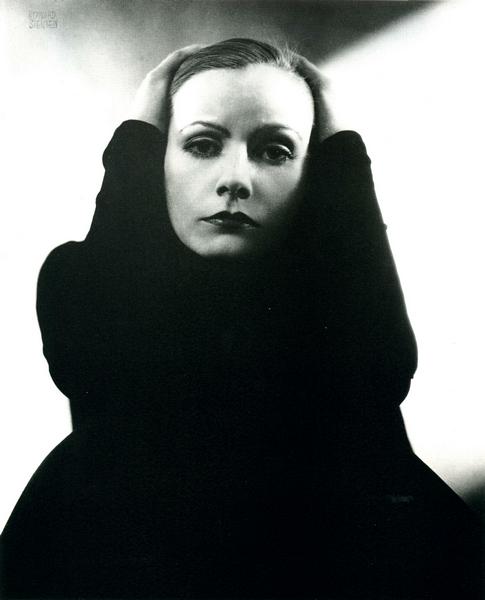
Kontakt
LUDWIGGALERIE Schloss Oberhausen
Konrad-Adenauer-Allee 46
46049 Oberhausen
Tel 0208 4124928
Fax 0208 4124913



